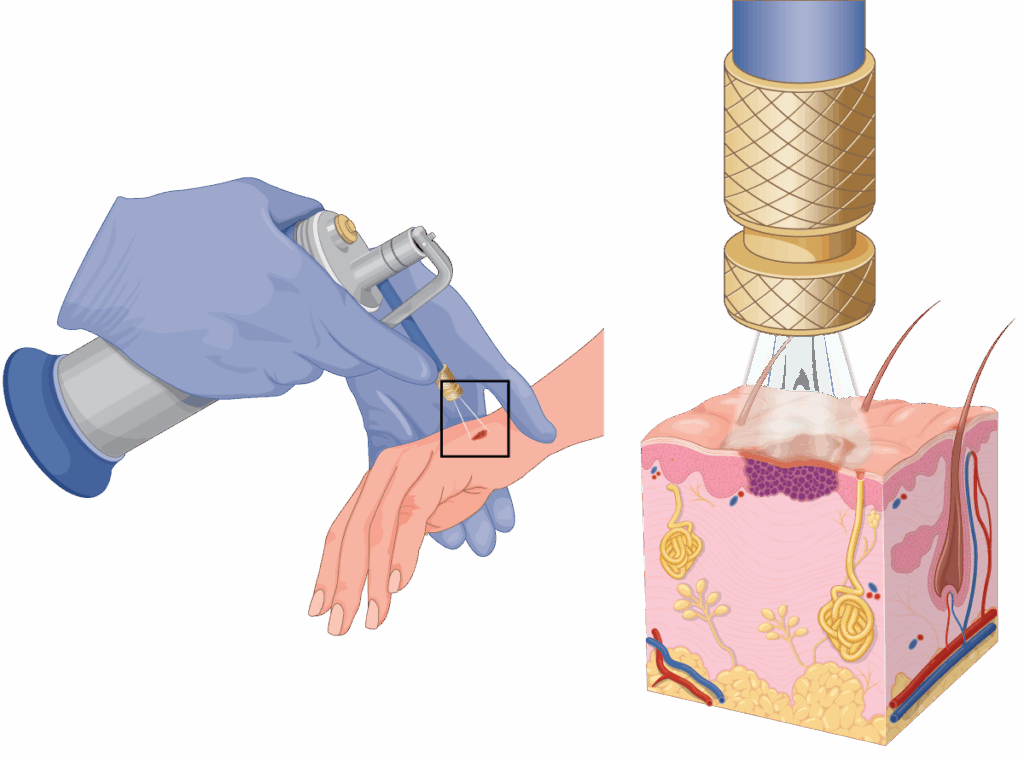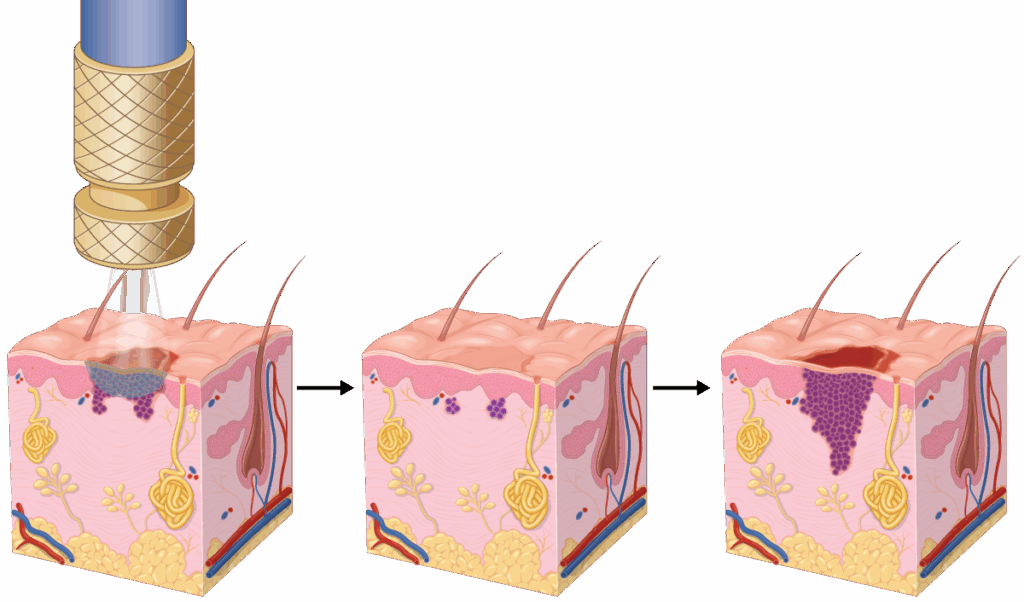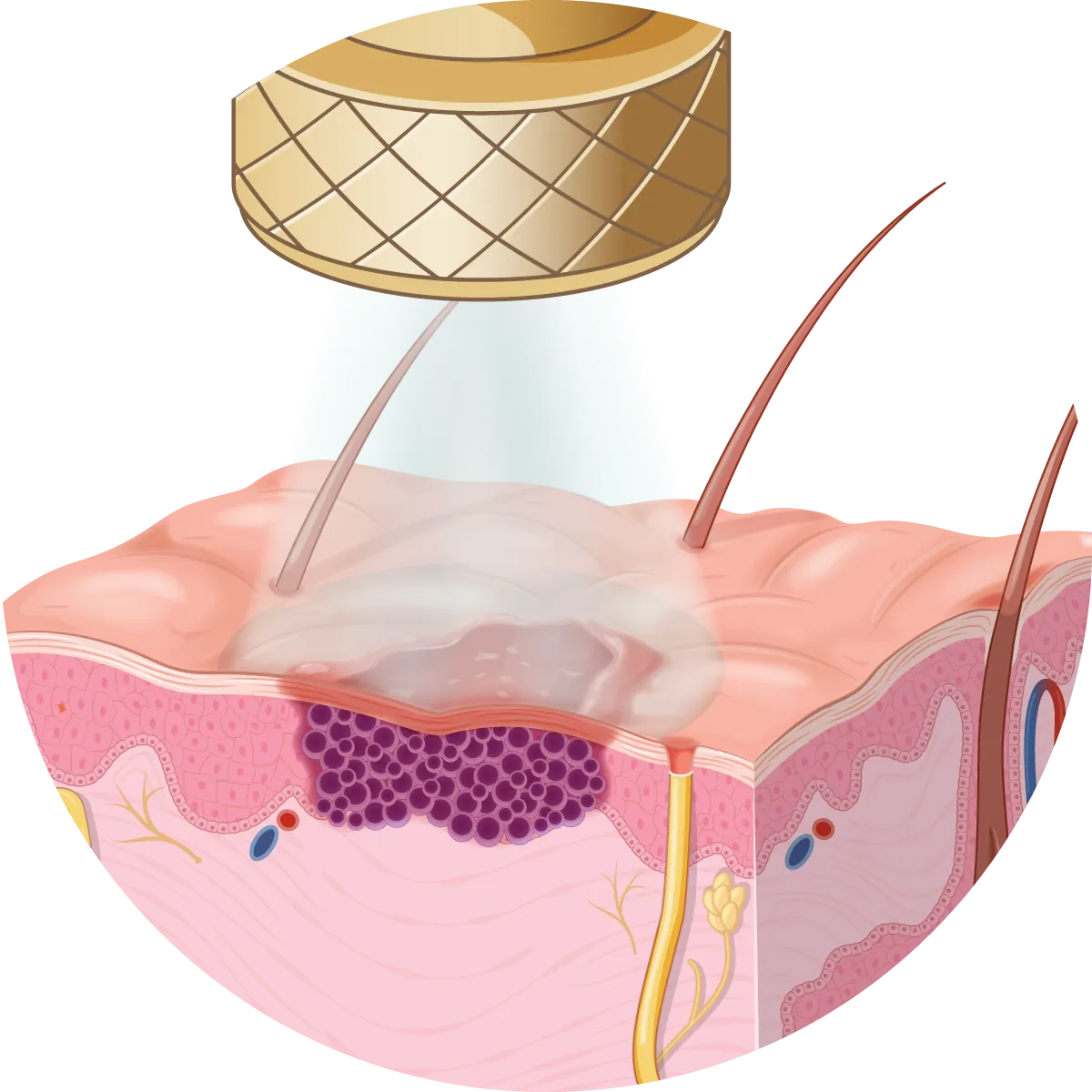Small amounts of liquid nitrogen (at a temperature of -196°C) are sprayed onto the lesion to freeze and destroy abnormal cells. Generally, the spraying lasts several seconds.
While the treatment does sting a little, most people tolerate the treatment very well when used on a few lesions. However, it can be uncomfortable when used on many lesions in a single session. Cryotherapy can often be undertaken during a skin cancer consultation or clinic appointment.
Liquid Nitrogen is most appropriately used on small numbers of lesions in a particular area (or field). If there are large numbers of lesions within a field, then your dermatologist may discuss field treatment options that could give better results. These options could include Efudix (fluorouracil), Aldara (imiquimod), and Photodynamic Therapy (PDT).
It is important to note the treated area can inflame, blister, and crust for up to 1-2 weeks following treatment.

What are the risks of having liquid nitrogen treatment?
There is a small risk that liquid nitrogen causes scarring or permanent white spots at the site of treatment. Your dermatologist will do their best to minimise the risk of this occurring by keeping the treatment superficial, where possible. In some situations it may be necessary to treat a lesion deeply to ensure adequate clearance of the skin cancer, resulting in a higher risk of scarring.
Your dermatologist will warn you about this risk before proceeding. In cosmetically sensitive areas (eg. the face), your dermatologist may suggest alternative options when appropriate to minimise the risk of disfiguring outcomes. The alternatives may have a lower risk of scarring.
Hyper-pigmentation or hypo-pigmentation can also occur and is more likely in people with darker skin. These pigmentation changes are often temporary, but not always.
Recurrence
Because the freezing can only penetrate superficial layers of the skin, cryotherapy is only an appropriate treatment for early and superficial lesions. When used inappropriately on more invasive lesions, treatment may give a false impression that the lesion has been successfully cured. This can leave cancerous cells behind in the deeper layers of the skin. The cancer will then continue growing until it appears again on the surface of the skin, often larger than the original skin cancer.
Your dermatologist will use their experience to assess the lesion at the time to determine whether it is appropriate to treat a lesion with liquid nitrogen.

Frequently Asked Questions
The liquid nitrogen used for cryotherapy is at a temperature of -196°C. While this is very cold, it is not very painful. There may be some slight stinging on the area of application. It shouldn’t last long, maybe several seconds to freeze and destroy the abnormal cells.
For skin lesions, you can generally expect a blister to develop within a day of your cryotherapy treatment. The wound will develop a crust a few days later. Depending on the area that has been treated, the dead tissue will start to shed after 1-6 weeks. A scar may form and new, healthy skin cells will propagate.
It is common for the area to blister after roughly an hour of the treatment. It’s possible that the blister could fill with some blood and cause a bit of minimal pain. Of course, your medical professional will go over this with you and any necessary steps to follow after the minor procedure.
Cryotherapy typically leaves the skin looking great. There is a small possibility that you could be left with a faint mark or a flat white scar once the area has healed. There is also the possibility of the lesion to grow back again, in which case it will likely need to be removed another way. Cryotherapy is a safe and dependable treatment for some lesions.

